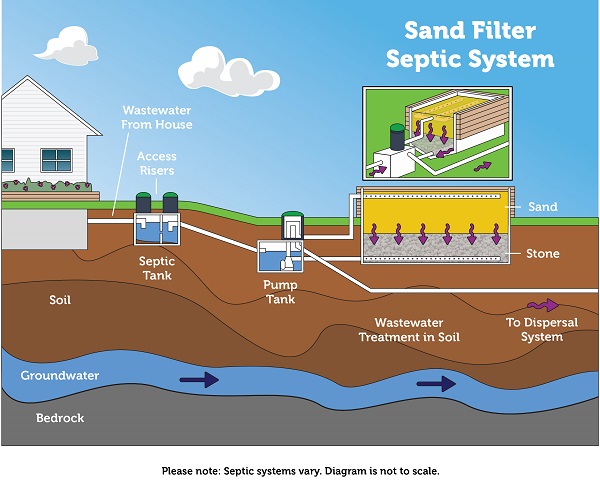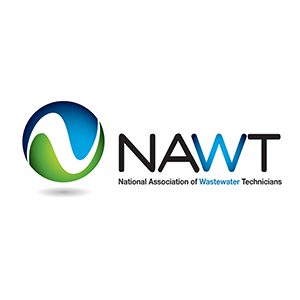The Washington Post published a story about failing septic systems as a result of climate change and the impact on waterways across the nation, with a focus on Florida. While the article raises an important discussion on the maintenance of septic infrastructure to protect our waterways, it ignores a much bigger issue – who is really to blame for algal blooms across the state and what investment will have the most impact on water quality issues?
Crews Environmental has been involved passionately in the ongoing debate about water quality in Florida since our inception 40 years ago. Since then, our founder has worked with multiple legislators, the Department of Environmental Protection and other entities that monitor water quality issues in Florida. In the last decade, we’ve seen much scapegoating occur as some scientists and media outlets insist on placing a large portion of the blame for ongoing algal blooms on poorly maintained septic systems. This scapegoating continues, even as media outlets ignore other issues that contribute in a massive way to the degradation of our natural waterways throughout the state.
Septic systems account for the sewage processing of approximately 20% of the population of the entire state. The remaining 80% of the population is serviced via centralized wastewater management infrastructure. This is important to note as we break down the points in the article.
Here are a few claims we’d like to address:
Claim:
“Florida hosts 2.6 million [septic] systems. Of the 120,000 in Miami-Dade County, more than half of them fail to work properly at some point during the year, helping to fuel deadly algae blooms in Biscayne Bay, home to the nation’s only underwater national park.”
Fact:
When septic systems fail, this often results in standing effluent on a homeowner’s lawn. Effluent is partially treated wastewater that has already been filtered and
naturally separated by the tank. A clogged or malfunctioning drainfield is a problem, but with regular maintenance, this situation rarely occurs. This is far different than scenarios of sewage pipes bursting or sewage overflows that occur at municipal wastewater treatment facilities which often releases raw sewage into our waterways and wetlands rather than already treated effluent. In fact, the FDEP already permits a
certain amount of effluent to be released in our waterways from sewage treatment plants.
Claim:
“24% of the state’s 1.37 million septic systems are failing.”
Fact:
According to whom? The writer offers no data to support this claim. The article even states that the EPA spokesperson has no report on the septic problem and only cites potential issues like precipitation changes, changing water tables, and increased temperatures (all of which would impact any centralized sewage treatment plants and infrastructure as well) as being causes for concern.
We did a little digging ourselves and found that in the last 30 days alone more than 1.2 million gallons of sewage, partially treated wastewater or non-potable reclaimed water made its way into our waterways, wetlands, and communities as a result of failing municipal wastewater infrastructure. A copy of that information can be procured directly from the Florida Department of Environmental Protection’s website.
Even if the claim is true, according to that math, 328,000 septic systems are failing. How were they failing? What amount of effluent actually reached groundwater and what amount of standing effluent went into storm drains? This is probably not something whoever made the initial claim (again, the source is not disclosed) took the time to calculate, so it’s impossible to say, but you can bet that these failing systems had a fraction of the impact that municipal lift station malfunctions, broken or leaking force mains, sewage overflows, pump malfunctions, employee oversights, bursting pipes or other incidents that resulted in raw sewage spills had.
Claim:
“[When systems fail] Bacteria and parasites from human waste flow into drinking water supplies”
Fact:
Effluent is not sewage. It’s important to take the time to understand how septic systems work, how septic systems are maintained, and the potential for issues with septic systems. You can see clearly in the images below how septic systems work naturally to filter out the majority of sewage and harmful bacteria from the wastewater that you flush. The effluent then passes into the drain field where it is filtered through the soil that naturally filters out harmful bacteria before they reach groundwater sources. The natural process retains important beneficial bacteria that serves the soil in a positive way and the water recharges the local water table.

Claim:
“In North Carolina’s Dare County, which includes Outer Banks destinations such as Nags Head and Rodanthe, groundwater levels are a foot higher than in the 1980’s. That means there’s not enough separation between the septic tank and groundwater to filter pollutants. The threat isn’t only along the coasts. More intense storms dumping inches of rain in a few hours soak the ground inland, compromising systems for weeks.”
Fact:
Rising groundwater levels may be a problem we will have to deal with regarding climate change, but the fact of the matter is that this is going to be a problem no matter if a homeowner is on a septic system or centralized sewer. The biggest recorded sewage spill in the history of Florida came from centralized sewage treatment in Ft. Lauderdale only two years ago to the tune of 211 million gallons. Another article outlines the continued issues a year later, as the aging infrastructure continues to fail to support the state’s increasing population.
If every single septic system failed simultaneously in the state of Florida, it would likely not have had such an impact as this singular spill did to the local waterways of South Florida. The fine in the instance above was allowed to be spent on fixing the infrastructure, but the damage has been done and the fact of the matter is (as evidenced by the continuing reported sewage spills occurring throughout the state on the DEP’s website), centralized sewer is looking more and more unsustainable to this growing population.
Claim:
“Miami-Dade County has a porous limestone bedrock problem. The soil under its 2.7 million South Florida residents allows septic tank effluent to reach groundwater, a problem intensified by climate change.”
Fact:
Effluent is partially treated wastewater, so the number of contaminants is largely reduced before it reaches the drain field. Once it reaches the drain field, it is spread out among the surface area of the yard and is then drip-filtered through the topsoil, sand, and gravel. Even with water tables rising as a result of increasing precipitation and
climate change, the risks are far less for drain fields or tanks to be impacted, which are watertight and inspected for leaks during each pump-out. Compare this to pipes of raw sewage that are not at all treated before arriving at the treatment plants, buried much deeper than drain fields, and constantly found to be leaking, bursting from blockages, or not reported at all. This also fails to account for deep injection wells where-in partially treated effluent is often placed to be used as reclaimed water, which is also often found to be leaking directly into groundwater sources. How will these wells be impacted by rising groundwater levels? Turns out, much more than they initially expected, according to this article uncovering a deep well injection leak in Texas.
How do municipalities propose to fix the clearly broken infrastructure they’ve created? Seems like for now blaming the issue on septic systems is their solution. It would be costly to dig up the miles of infrastructure they’ve now created and refuse to admit is contributing in a massive way to water quality issues throughout the state. Rather than keeping the responsibility on the homeowner to maintain their own septic system with incentive programs or pump-out reporting mechanisms, they choose to add more and more residents to the failing infrastructure, a veritable ticking time bomb for more situations like the Fort Lauderdale sewage spill.
We’ve long been lobbying for septic system pump out incentive programs, a septic system registry, homeowner pump-out reporting, tax incentives, overdue pump out notifications and fining homeowners that fail to maintain their system. Efforts like this could go a long way to improving any contribution that septic systems may have to any water quality issues.
While one-fifth of the state’s homeowners are on septic systems, Florida’s water issues are much more complex than that. As we’ve seen with Lake Okeechobee releases, the overdevelopment of wetlands impacting water tables in low-lying areas, and fertilizer and chemical pesticide runoff this is a very complex problem that requires a comprehensive solution.
As we continue to see the increased impacts of climate change, we are reminded of the responsibility we have to care for the planet and ensure that our actions don’t continue to contribute to the problem. While septic owners can be sure that their infrastructure is a cost-effective, sustainable, and low-energy alternative to moving to municipal sewage treatment, they do have a responsibility to pump out their septic system every 2 to 5 years depending on their system and needs.
Water quality issues in our state are multi-faceted, and as we grow it’s important to develop a complex plan for remediation rather than pointing fingers and pointing to one perceived solution. As a septic contractor, you can be sure that we will continue to call out media sources that seek to push agendas to help local governments skate around the responsibilities they have to their residents and the state to properly maintain their municipal treatment facilities. We all must take responsibility and do our part to ensure that we are doing everything possible to take care of our waterways and ensure that Florida will continue to be a flourishing beacon of beautiful beaches and tourism for generations to come.
Septic maintenance is an important part of taking care of our local waterways.
Have a septic system you need pumped out?
Get in touch now.
—————
Works Cited
Author: Morrison, Jim, Publication: The Washington Post, Date: 04/12/2022, Article Title: Backed-up pipes, stinky yards: Climate change is wrecking septic tanks, Viewed: 04/25/2022, URL: <https://www.washingtonpost.com/climate-environment/2022/04/12/backed-up-pipes-stinky-yards- climate-change-is-wrecking-septic-tanks/>
Document Title: Pollution Notice, Agency: Florida Department of Environmental Protection, Date: Given as Last 30 Days Reported, Public Notice of Pollution No. 3.8.78.663, URL: <https://prodenv.dep.state.fl.us/DepPNP/reports/viewIncidentDetails?page=1>, Accessed 04/25/2022
Author: Munoz, Caitie, Date: 02/18/2020, Fort Lauderdale Hit With $1.8 Million Fine From State, Looks For Federal Funds To Stop Sewage Spills, Site: WLRN, Viewed: 04/25/2022, URL: <https://www.wlrn.org/news/2020-02-18/fort-lauderdale-hit-with-1-8-million-fine-from-state-looks-for- federal-funds-to-stop-sewage-spills>
Author: Staletovich, Jenny & Munoz, Caitie, Date: 02/25/2021, A Year Since The Spills: Fort Lauderdale Sewage Problems A Sign Of Infrastructure Woes For Other Coastal Cities, https://www.wlrn.org/news/2020-02-18/fort-lauderdale-hit-with-1-8-million-fine-from-state-looks-for- federal-funds-to-stop-sewage-spills Site: WLRN, Viewed: 04/25/2022, URL <https://www.wlrn.org/news/2021-02-25/a-year-since-the-spills-fort-lauderdale-sewage-problems-a-sign- of-infrastructure-woes-for-other-coastal-cities>
Author: Paulsen, Stephen Date: 12/18/2019 Researchers find a leak in West Texas injection well Site: The Big Bend Sentinel Date Viewed: 04/26/2022 URL <https://bigbendsentinel.com/2019/12/18/researchers-find-leak-in-west-texas-injection-well/>
Author: Sainato, Michael Date: 09/10/2020 Florida sewage spills expected to worsen due to ageing infrastructure Site: The Guardian Date Viewed: 04/26/2022 URL <https://www.theguardian.com/us-news/2020/sep/10/florida-sewage-spill-waterways-infrastructure>









